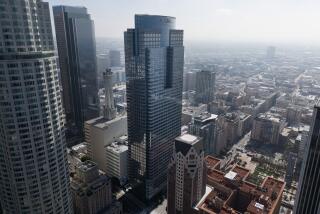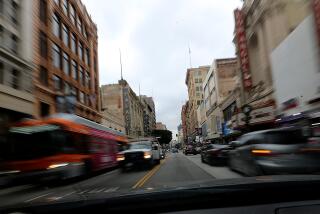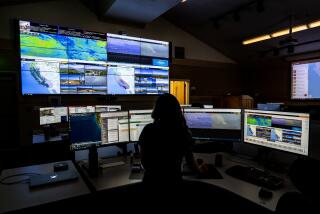Katz Demands Study of Faulty Science Center : Cal State Northridge: The assemblyman wants the university system to investigate the process by which the $15.4-million project became ‘a vibrating monstrosity.’
- Share via
Assemblyman Richard Katz called Wednesday for the state university system to investigate the problem-ridden science center at Cal State Northridge, a $15.4-million project that he described as “a vibrating monstrosity.”
“If the situation with the building wasn’t so outrageous, it would be comical,” Katz (D-Sylmar) said in a letter to the acting chancellor of the California State University system, Ellis McCune.
Katz said that even if many of the mistakes can be corrected, the revisions will cost money. “Sure, the building has to be put into shape so that it can be used by the students first,” Katz said. “But my point is that people need to be held accountable for causing these errors.”
The Times reported Saturday that the center--actually three new science buildings--which was to have opened last spring and now is expected to be finished within the next few months, has problems ranging from a ventilation system that causes vibrations, which could make the buildings unsuitable for sensitive scientific equipment, to inferior wood cabinet work, which professors say swells by half when it gets wet.
In his letter, Katz criticized university system administrators for not properly supervising the construction. Katz, whose district includes CSUN, had worked for three years to secure state bond money for the center.
“It’s bad enough that the science building is over-budget and behind schedule,” Katz wrote. “I just hope it’s not another useless albatross of the CSU system.”
In July, the roof of a music building caved in at Cal State Long Beach because of apparent structural flaws. That finding led to closure of eight other buildings on that campus.
The new science center at CSUN already is more than $600,000 over its original budget of $14.6 million. About $100,000 remains from additional state funds sought to pay for cost overruns, according to state university system administrators and a consultant with the Assembly subcommittee on higher education.
McCune was at an all-day meeting in Ventura Wednesday and had not had a chance to review the letter, said university system spokeswoman Colleen Bentley-Adler. She said McCune would look into the situation Thursday.
CSUN President James W. Cleary blamed the problems on a state-mandated process for estimating construction budgets, which in this case caused the project to be redesigned several times before a contractor was willing to build it within budget.
“I appreciate the assemblyman’s interest in the project, because as a legislator he and others might be in a position to assist not only this campus but all CSU campuses in averting future problems caused by this cumbersome process,” Cleary said.
CSUN administrators had said previously they considered the vibrations the only problem that might be hard to fix. University administrators have asked the center’s architect, Leo A. Daly, to investigate how the vibration problem occurred and to conduct further tests of the ventilation system.
Science faculty members at CSUN said they began contacting campus administrators more than a year ago about their concerns over the center. They blame campus and university system planners, architects and builders for the mistakes.
Some even blame themselves for not recognizing potential glitches when they viewed project plans. “We’re scientists, sure, but we don’t have the expertise to read a blueprint,” said Don Bianchi, dean of the School of Science and Mathematics.
Faculty members have also complained about seats in the center’s planetarium that permanently recline, making use of the building as a lecture hall difficult; classrooms equipped with motion-activated lighting without a manual override, which prevents darkening the room to project slides or films; and student experiment stations that lack the necessary electrical outlets or sinks.
Bianchi announced earlier this month that some of the faculty for whom the center was constructed would instead remain in their 1950s-era laboratories, perhaps permanently. Among those professors opting to stay put are microbiologists, who use sensitive electron microscopes, and possibly some professors who use lasers, he said.
The older science buildings were scheduled to be turned into offices both for the science faculty--which has overflowed into portable offices parked on the lawn outside--and their colleagues from other schools. Failure of some faculty to move into the new buildings as planned would cause continued crowding, said Dean Skovlin, chairman of the chemistry department.
More to Read
Sign up for Essential California
The most important California stories and recommendations in your inbox every morning.
You may occasionally receive promotional content from the Los Angeles Times.










